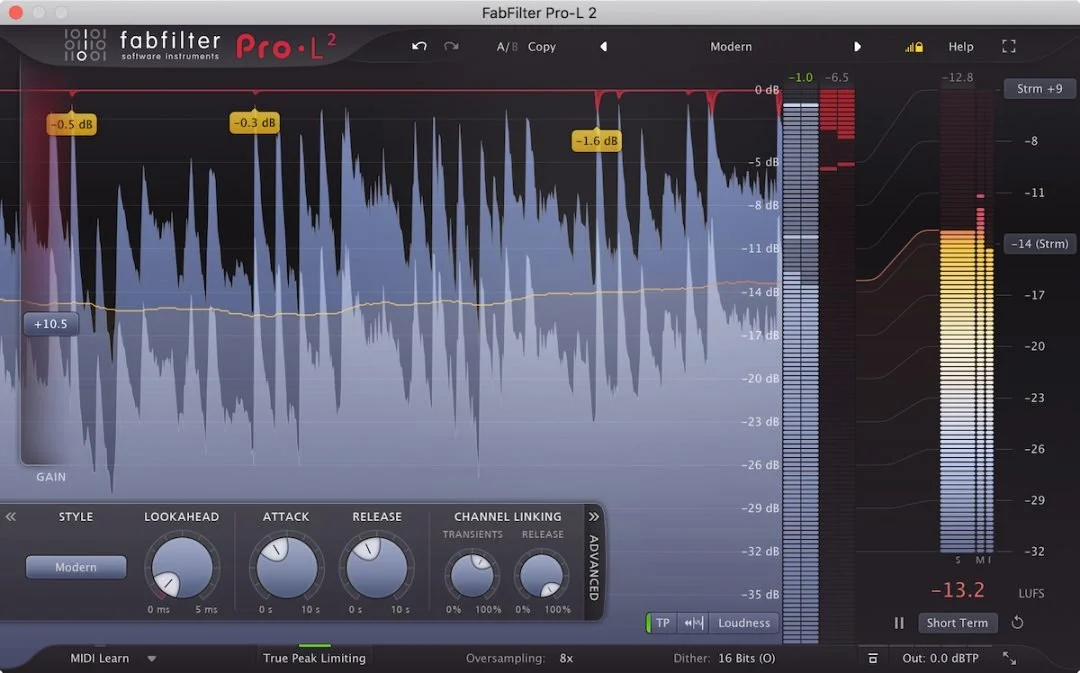Mastering the Art of True Peak Limiting in Music Production
Introduction
In the intricate world of music production, achieving the perfect balance between dynamics and loudness is an ongoing challenge. One essential tool that helps producers and mastering engineers navigate this balance is true peak limiting. In this blog post, we'll explore what true peak limiting is, why it matters, and how to use it effectively in the context of music production.
What Is True Peak Limiting?
True peak limiting is a specialized form of audio processing that focuses on peak levels in an audio signal. Unlike standard peak meters, which measure the highest sample values in a digital audio stream, true peak meters consider the inter-sample peaks that may occur when an analog waveform is reconstructed from digital audio data.
To understand this concept, imagine that the digital audio waveform is represented as discrete steps (samples). When converted back to an analog signal during playback, these steps are connected to create a continuous waveform. True peak limiting ensures that these connections between samples do not exceed the digital maximum, preventing clipping or distortion during playback.
Why Is True Peak Limiting Important?
True peak limiting is essential for several reasons:
Playback Compatibility: Various playback systems, such as DACs (digital-to-analog converters) and codecs used in streaming services, may interpret inter-sample peaks differently. True peak limiting helps ensure that your music sounds as intended on all these systems.
Preventing Digital Clipping: If your audio signal exceeds the digital maximum, it can lead to harsh digital clipping, which can damage speakers and degrade audio quality.
Broadcast Standards: Many broadcasting standards, including those for radio and television, have strict true peak level limits. Compliance with these standards is crucial for getting your music played on these platforms.
Optimal Sound Quality: By preventing inter-sample peaks, true peak limiting helps maintain the integrity and sound quality of your music, especially in high-resolution audio formats.
How to Use True Peak Limiting in Music Production
Now that we understand the importance of true peak limiting, let's delve into how to use it effectively in music production:
Choose the Right True Peak Limiter: Start by selecting a high-quality true peak limiter plugin or hardware processor. Some popular options include FabFilter Pro-L 2, Waves L3 Multimaximizer, and TC Electronic's Clarity M Stereo.
Set Your True Peak Limit: Determine the maximum true peak level you want to achieve. This will depend on your target platform, such as streaming services, radio, or CD. Check the platform's guidelines for recommended true peak levels.
Adjust Threshold and Release: Begin with conservative settings on your limiter. Gradually reduce the threshold until you achieve the desired true peak level. Pay attention to the release time to ensure that the limiting process sounds natural and transparent.
Use Oversampling: Most true peak limiters offer an oversampling option, which can improve accuracy and reduce artifacts. Enable oversampling when mastering your tracks.
Listen Closely: While true peak limiting is essential for compliance and preventing distortion, it's also important to use your ears. Listen carefully to your music throughout the limiting process to ensure that it still sounds musical and retains its dynamic character.
Final Quality Check: After applying true peak limiting, perform a final quality check to ensure your music sounds great and meets your artistic vision. Listen on various playback systems to confirm that the true peak limiting hasn't negatively affected the audio.
Conclusion
True peak limiting is a vital tool in music production, helping you achieve playback compatibility, maintain audio quality, and meet industry standards. When used judiciously and in conjunction with other mastering processes, true peak limiting ensures that your music not only sounds great but also reaches its audience in the best possible form, regardless of where and how it's played.



